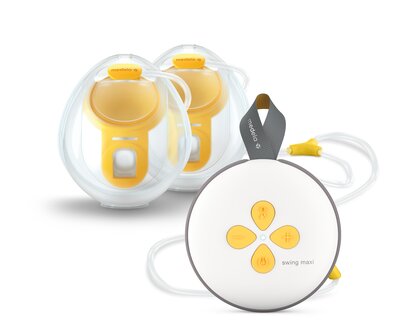It may be due to the type of birth you and baby had, especially if it was difficult or traumatic.
It could be from old fashioned breastfeeding techniques where the health professional tried to attach your baby onto your breast when your baby was showing signs of not wanting to feed.
It could be from baby having a tongue tie or a headache after birth or that baby was born premature and is feeling a little overwhelmed by all the things that happen to them whilst in the special care nursery. We may never know.
The important thing to remember is your baby is not acting this way around you or your breasts because they are angry or upset with you! Your baby loves you more than anything and really wants to be held and snuggled by you. It’s just that something has just gotten in the way and made this option feel difficult for bub right now.
Many mums often describe feeling utterly rejected or even that they do not feel like a mum to their baby when something like this happens. It is totally understandable as every instinct in your body draws you to love and feed and calm your baby, when you see your baby crying and refuses to breastfeed it may feel like bub is sending clear signals that they do not like being near you.
This can be heartbreaking, but remember this is not how baby feels about you; this is just how baby feels in this moment about what is going in their mouth.
Your baby absolutely loves and adores you. Every time your baby opens their eyes they search for you, they can’t take their eyes off you. To your baby you are mum, the safest most divine person to be held by, you are beautiful and brimming with love, the best thing to wake up to. Every one of their senses is tuned into you, in perfect rhythm. That is why the next few tips on how to get your baby feeding on the breast will relate to this.
Here are a few ways to deal with breast refusal…
Try to Relax Around Your Baby
This is important, but understandably it is not as easy as someone just saying “calm down!”
Before the feeds, take 3 long and slow deep breaths with your eyes closed (if safe to do so). Lean back into the chair or bed, and notice your shoulders drop. Find a meditation app which plays relaxing music or words, or play your favourite music for a few mins before feeding as well, to really relax your muscles.
Get More Skin to Skin Contact
Hold your baby vertically on your chest in skin to skin contact. Keep baby’s nappy on (!) and cover bub with blankets to keep their back warm too.
Use Mum’s Gentle Voice
Whilst you are relaxing together in skin to skin contact, sing and talk softly to your baby. It doesn’t have to be in tune or even be full sentences; just hearing your voice with calming noises is relaxing for baby and also for you.
Never underestimate the power of your gentle voice to help calm a situation.
Follow Your Baby Led Feeding Instincts
Whilst in this position, you may find baby starts to bob their head and work their way to the breast.
Some baby’s will instantly attach at the breast and feed just by changing to using this feeding position and allowing baby to use their own natural instincts.
Some babies may bob down to the breast and then once they feel the nipple on their lips start crying or screaming. If your baby refuses to breastfeeed, gently bring baby back up into the neutral vertical position on your chest and calm them with soft gentle words and firm but gentle hold on their back from your hand.
For some babies they need to feel better around the breast first before they can even start to latch onto the breast. Continuing to make baby breastfeed when they are showing signs of distress can often make the issue worse. Instead, every time baby starts to cry or scream, change baby’s position into the neutral position or a positon baby prefers and calm baby before trying again. You may have to do this several times each feed.
When you feel you and baby have tried to breastfeed enough, yet is still not working, relax and give baby an expressed breast milk feed. There is always next time, this process often takes time.
Make a Cocoon
If your baby is still very upset around your breast it is important to plan to have at least 2-4 very quiet days at home together. Cancel everything in your schedule as baby needs to be in very close contact with you for many hours.
Try and make yourself a “cocoon” – an area where you can sit, relax, lie for most of the day with your baby in skin to skin contact. This may be in your bed or on the sofa.
The main point is that baby needs to feel happy again being next to the breast and the best way is to relax with baby next to your breasts for a few days. Most babies eventually become much calmer and can then learn to feed at the breast again.
Forget the Housework for a Few Days
If you are needing to have some “cocoon” days together, plan them out a little. Make sure you have plenty of water and snacks on hand. Hide the pile of washing or dishes, or anything which makes you feel like you need to do housework during this time!
This time is for doing nothing but being with your baby; of course you can watch TV or do anything your enjoy, which doesn’t disrupt your time together!
Continue Safe Sleeping Practices
If you are napping or sleeping during this time, make sure you place baby in their safe sleeping space first. Only resume skin to skin cuddles together once you are awake.
Hit the Reset Button
This very close contact for prolonged periods of time is like a re-set button for bub; it allows them to forget why they were upset or angry around the breast. This can lead to them getting back on the breast.
Try Co-bathing
The other wonderful “reset” is by having a bath with your baby. To do this you will need someone with you who can pass baby to you and take them out of the bath again.
Lie in a warm bath and have baby placed on your chest vertically. Keep baby’s back warm by pouring a cup of the bath water over bub every so often or cover baby’s back with a face washer.
Just like when you hold baby in skin to skin contact, sing to baby, talk gently and even have a cry and allow yourself and your feelings to flow.
You may find baby starts to find their way to your breast and may even feed the first time you bath together, or you may need to do this every day for a few days to notice results. This can be one of the most profound ways to get a baby back breastfeeding and is most definitely worth a try.
If you do not have your own bath tub, ask a family member or friend if you can use theirs.
Express Milk Onto the End of Your Nipple
This can entice baby to latch and then start sucking. Remember, at this stage, even a small lick or suck is progress. Try to see the small things as a move forward. Eventually baby will be sucking for long periods and you will be breastfeeding again, but it all started with small steps.
Try Using a Nipple Shield
If your baby has been fed from a bottle whilst they were not able to breastfeed, some babies can get used to the feeling of the bottle; harder silicone instead of softer breast tissue.
Because the nipple shield feels similar to a bottle teat, it can be used to coax a reluctant baby to accept the breast. Try this when your baby is not very hungry and your breasts are full. Apply the nipple shield correctly, ensuring some of you nipple is pulled into the shield.
Express some milk into the tip and onto the top of the shield to moisten it and entice bub to latch and feed. Once baby starts to suck, compress your breast to encourage more milk to flow.
Some babies need only a few sessions with a shield to return to full breastfeeding. Other will need more practice, or perhaps brief use of the shield at the beginning of each feed.
Don’t Forget Breast Compression
This is a gentle way of holding and squeezing the breast during a breastfeed to help you increase milk flow and encourage bub to stay feeding at the breast as they will be rewarded with more milk.
Hold your breast by cupping and squeezing the breast between thumb and fingers – e.g. with the thumb on top of the breast and the fingers of the same hand below it. Place your hand far enough behind the areola so you don’t disturb bub. Do not press on your breast so that it causes pain, and avoid sliding your thumb or fingers along the breast.
Maintain the compression during baby’s sucking and then remove your hand from the breast in the pauses. Repeat the compressions until there is no active swallowing.
Try the Supplementary Nursing System (SNS)
If the milk supply is low, an SNS™ taped under the shield or directly onto your nipple can help provide an encouraging milk flow and keep baby on the breast until bub is self-sufficient.
Maintain Your Milk Supply
Often, when a baby refuses to breastfeed and life is feeling very stressful for mum, the maintenance of her milk supply can dwindle.
It is important to keep a good milk supply so that when baby comes back to the breast there is lots of milk to keep baby breastfeeding.
Whilst bub is not yet feeding directly at the breast, express you milk around 8 times every 24 hours. This way you will continue to make enough milk for baby. This number is based on the minimum average number of feeds babies will naturally do in the first month of life per day.
Have you tried to help your baby return to breastfeeding? What breastfeeding questions do you have for us? Please join the conversation here or on our Medela Australia Facebook page.






















































